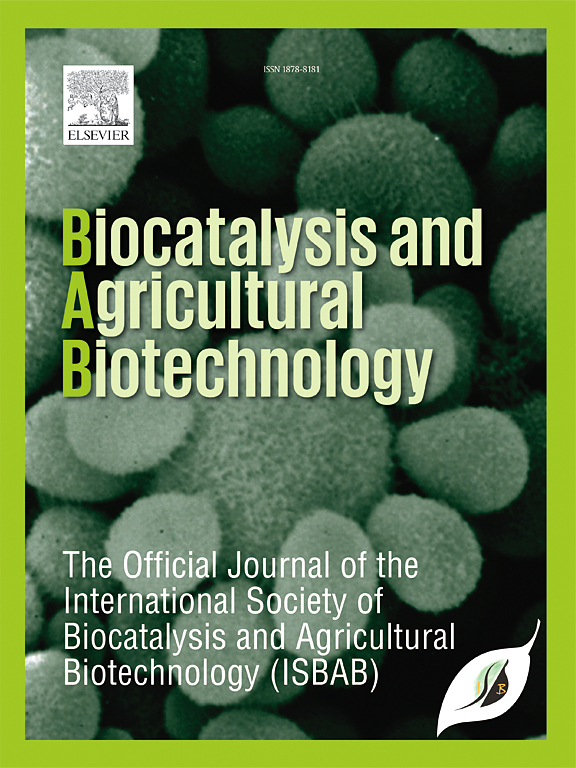Comprehensive profiling and therapeutic potential of Nypa fruticans leaves: Unveiling analgesic and anti-inflammatory properties via in vivo and in silico approaches
IF 3.4
Q2 BIOTECHNOLOGY & APPLIED MICROBIOLOGY
引用次数: 0
Abstract
Traditionally, Nypa fruticans has been widely used as an herbal remedy, inspiring research into new drug development. This research aimed to explore the phytochemicals of the ethanol extract of Nypa. fruticans leaves (ENFL) to identify potential compounds for treating pain and inflammation. Several methods were employed to assess the in-vitro antioxidant activity. The anti-inflammatory effects were calculated utilizing a formalin-induced inflammation model. Additionally, in-vivo analgesic activity was evaluated following an acetic acid-induced writhing test, hot plate test, and tail immersion test. Metabolites of ENFL identified via GC-MS were then subjected to computational analysis against the cyclooxygenase-2 enzyme to explore potential lead compounds. Twelve compounds were identified, with Phenol, 2,6-dimethoxy- and Epicholestanol being the most prominent. ENFL exhibited significant antioxidant activity in both the DPPH scavenging assay (IC50: 19.6679 μg/mL) and the reducing power assay (RC50: 0.5925 mg/mL). The in-vivo anti-inflammatory assay showed the highest (42.51 % and 54.33 %) suppression of edema at the fourth hour at 200 and 400 mg/kg body weight of ENFL, respectively, while indomethacin exhibited 59.48 % inhibition. Moreover, all in-vivo analgesics tests demonstrated a significant dose dependent effect of ENFL at the experimental doses. In-silico studies screened Phenol, 2,6-dimethoxy- (CID-7041), as the most active compound, exhibiting stronger binding affinities to the cyclooxygenase-2 than other compounds. Additionally, ADME/T analysis indicated that the compound exhibited favorable pharmacokinetic properties and toxicity profiles. The current in-vitro, in-vivo, and in-silico investigations revealed analgesics and anti-inflammatory properties of Nypa fruticans leaves, supporting its potential as a natural drug for treating pain and inflammation.

综合分析和治疗潜力的橡胶树叶:揭示镇痛和抗炎特性通过体内和计算机方法
传统上,Nypa fruticans被广泛用作草药,激发了新药开发的研究。本研究旨在探讨芡实乙醇提取物的植物化学成分。以确定治疗疼痛和炎症的潜在化合物。采用多种方法评价其体外抗氧化活性。利用福尔马林诱导的炎症模型计算抗炎作用。此外,通过醋酸诱导的扭体试验、热板试验和尾巴浸泡试验来评估体内镇痛活性。通过GC-MS鉴定ENFL的代谢物,然后对环氧化酶-2酶进行计算分析,以探索潜在的先导化合物。共鉴定出12个化合物,其中苯酚、2,6-二甲氧基-和表戊烯醇最为突出。ENFL在DPPH清除率(IC50: 19.6679 μg/mL)和还原力(RC50: 0.5925 mg/mL)试验中均表现出显著的抗氧化活性。体内抗炎实验显示,200和400 mg/kg体重的ENFL对第4小时水肿的抑制作用最高,分别为42.51%和54.33%,而吲哚美辛的抑制作用为59.48%。此外,所有体内镇痛试验均显示实验剂量下ENFL具有显著的剂量依赖效应。硅晶实验筛选出苯酚,2,6-二甲氧基- (CID-7041)为活性最强的化合物,与环氧合酶-2的结合亲和力较强。此外,ADME/T分析表明,该化合物具有良好的药代动力学性质和毒性谱。目前的体外、体内和计算机研究揭示了果叶的镇痛和抗炎特性,支持其作为治疗疼痛和炎症的天然药物的潜力。
本文章由计算机程序翻译,如有差异,请以英文原文为准。
求助全文
约1分钟内获得全文
求助全文
来源期刊

Biocatalysis and agricultural biotechnology
Agricultural and Biological Sciences-Agronomy and Crop Science
CiteScore
7.70
自引率
2.50%
发文量
308
审稿时长
48 days
期刊介绍:
Biocatalysis and Agricultural Biotechnology is the official journal of the International Society of Biocatalysis and Agricultural Biotechnology (ISBAB). The journal publishes high quality articles especially in the science and technology of biocatalysis, bioprocesses, agricultural biotechnology, biomedical biotechnology, and, if appropriate, from other related areas of biotechnology. The journal will publish peer-reviewed basic and applied research papers, authoritative reviews, and feature articles. The scope of the journal encompasses the research, industrial, and commercial aspects of biotechnology, including the areas of: biocatalysis; bioprocesses; food and agriculture; genetic engineering; molecular biology; healthcare and pharmaceuticals; biofuels; genomics; nanotechnology; environment and biodiversity; and bioremediation.
 求助内容:
求助内容: 应助结果提醒方式:
应助结果提醒方式:


